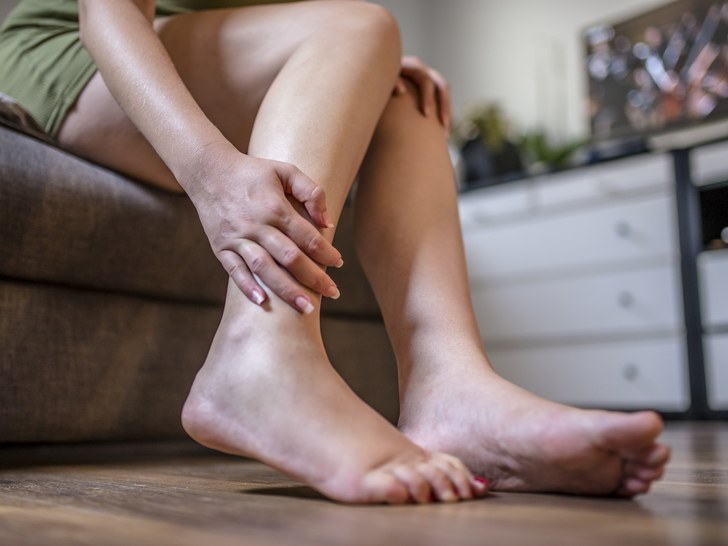Pain in the lower part of the legs is quite a common condition but it may be difficult to figure out its root cause. Despite the fact that many signs like the type of pain (it can be cramping, burning, stabbing, etc.) can give an idea of what is causing it, often a detailed physical examination or a visual test is required to determine the exact diagnosis.

But you also need to know that self-diagnoses is not an acceptable option, especially if you feel severe and sudden pain that is accompanied by swelling or if you are suffering from a medical condition such as diabetes or circulatory problems. Consult your doctor for a proper diagnosis so that you can undergo the proper and timely treatment and return to your usual activities.
1. Muscle cramps
A muscle cramp is a sudden muscle contraction that is beyond your control. The calf muscle is a common area where cramps can occur. Muscle cramps can be mild and feel like tiny twitches or be serious and severely sharp.
Dehydration, electrolyte depletion, or exercise in extreme heat can increase the risk of muscle cramps. There are also a few more conditions that can cause cramps in the lower leg muscles such as diabetes, fibromyalgia, thyroid or liver disease, and nerve or blood vessel diseases. Pregnancy is one more common cause of muscle spasms. In addition, some medications such as cholesterol-lowering drugs can also lead to muscle cramps.
A tender muscle or palpable knot that can cause muscle cramps is usually diagnosed with the help of a medical history and physical examination. But your doctor can prescribe additional blood tests or imaging. Treating leg cramps often involves gentle stretching, massage, and applying heat. Taking magnesium or calcium supplements may also be recommended. Moreover, any underlying condition can be a hidden cause of muscle cramps.
2. Chronic venous insufficiency
Leg veins return blood back to the heart through valves that help direct blood flow and control blood pressure. If the valves don’t work properly, blood flows back into the veins and accumulates in the legs. This blood collection can increase your venous pressure. This condition is called chronic venous insufficiency. The most common symptoms of chronic venous insufficiency include pain and swelling in the legs, poorly healing wounds and varicose veins NYC.
Each factor or condition that increases the blood pressure in the veins can lead to chronic venous insufficiency. Obesity, prolonged standing, or pregnancy are able to put additional pressure on the veins in legs that may result in valve damage. Leg injury or vein clot can also cause chronic venous insufficiency. Treatment for chronic venous insufficiency involves compression stockings and leg elevation.
3. Deep vein thrombosis
Deep vein thrombosis is a very serious condition that may even threaten your life. It means that there is a blood clot in the leg vein that can tear off and enter the lungs. The symptoms of DVT in the lower leg include cramping pain, swelling, and redness of the calf. A deep vein blood clot can develop due to damage to a vein wall such as an injury or surgery. Some underlying health conditions such as cancer or pregnancy can also increase the likelihood of a blood clot.
In addition to a physical examination, your doctor can diagnose DVT with the help of ultrasound. Treatment for DVT involves taking an anticoagulant (blood-thinning medication) to prevent an increase in clot size or the formation of new clots.
